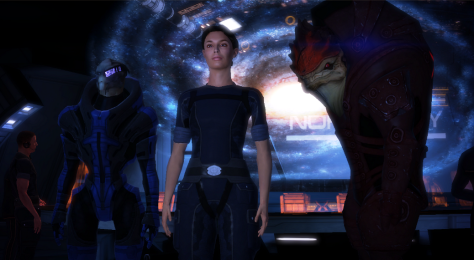
I recently picked up South Park: The Stick of Truth (SoT), and I’ve been having an absolute blast with it. It’s a fun, funny, and fantastic game complete with decent mechanics and enjoyable gameplay. SoT is a turn-based combat game, and it’s been awhile since I’ve played one of them. Thinking back…the last one had to be…gosh…Final Fantasy IV on the DS, maybe? What’s interesting about combat in SoT is that your party consists only of two people – you and another character. Going in I expected to start out small and grow my party into the standard three- to four-person crew. In SoT, while I’ve unlocked other members of my party, only one stays with you on screen and in battle. As they all have different abilities, you can switch team members at any given time, but more often than not, I’ve found myself a long-term companion in just one character. The sweet, and at times vicious Butters.
If you’re not familiar with South Park the show, then I’m sorry. He’s plenty on the Internet if you’d like to meet him, but suffice to say, I like him. I like him in South Park, as well as in SoT. He’s an entertaining counterpart with a pretty good skillset in battle. Though I’ve had to switch him out for others from time to time (and sometimes you’re made to pick a certain teammate), whenever I’m doing general traveling to quests in the game, I prefer to have Butters at my side.
It’s interesting to consider companionship in games and why we’re drawn to some characters and not others. In the case of picking teammates, some people find their perfect party and use them throughout a game (or games), while others try to give all their party members equal amounts of screen time. Depending on the game, I’ve done a bit of both. More often than not, however, I find myself picking the same characters over and over again, and not just for their skills but for their company. It’s not complicated math; in real life we keep company with those that make us feel comfortable, so why wouldn’t we do the same in games?
But as I said, for me, this choice really depends on the game and the characters. Say what you will, but if I find myself visually or emotionally connected to a character, 99.9% of the time, that character is going to be on my team. It happened with Garrus in the Mass Effect games. It happened with Alistair in Dragon Age: Origins. It happened with Rikku in Final Fantasy X. I wanted to form stronger relationships with those characters over others (if even their A. I. was occasionally terrible in battle). It didn’t matter if my team was unbalanced because I was with the characters I wanted to be with.
On the flip side, if little attraction occurs between me and a game’s characters, I’m more likely to simply choose a well-rounded team and try to keep everyone on equal footing. In both Final Fantasy III and Final Fantasy IV, I had difficult time keeping up with everyone’s backstories, so the characters became little more than muddled types. My goal therefore went from understanding story to creating efficient game play, which meant keeping a mostly balanced team and switching out characters for those that needed some leveling up. Moving out of turn-based combat games, I didn’t really connect with any of the folks in Dragon Age II. (Save for Varric – though he was especially cool, I didn’t find him to be an integral member of my team.) So there I used the characters that were necessary when they were necessary and kept swapping out other teammates when I got tired of looking at the same three people on screen.
I’m enjoying the two-person party dynamic in SoT more than I thought I would. It keeps things from getting too crowded on screen (generally and during battle), though I do occasionally I had a third in battle if only to help take some of the damage. Having a two-party team also keeps the battles moving since I’m not constantly having to scroll through a bunch of options, trying to remember who had what abilities (I have a terrible memory for such things). I may go back and do another SoT playthrough with another character at my side, but I’m happy with Butters for the moment. He makes me laugh, and that’s probably the best thing I could ask for in a teammate.
Where do you stand when it comes to teammates in games? Do you stick with the same party all the time, or do you like to let all your characters have their fair share of play?


That’s true. In one game I played , I always picked the dog and an elementary school kid. The game allows 4, but these two are always with me.
Sometimes it’s just nice to stick with characters that you know. It makes the game comfortable and familiar, which are good things.
I’ve found the impulse to keep your favorite characters around to be a hard one to fight, especially so in BioWare games. Playthrough after playthrough I find myself sticking with the same couple of characters most of the time even though there’s unique dialog to be had if I would just bring someone else. But no, Tali and Garrus must be there! It wouldn’t be the same without them!
That’s cool. As much as I liked always having Garrus by my side, I tried to mix up my team whenever I could. However, in each game I always found the alien characters more interesting than the human ones. Besides Garrus, in ME2 (and part of 3), Mordin was my go-to. His conversations were just too good!